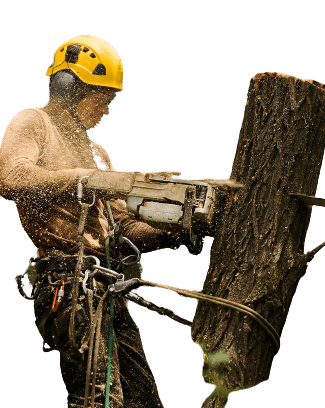Oak Bracket Fungus
Oak bracket fungus, technically known as Inonotus dryadeus, is an intriguing organism that occupies the world of fungi with special appeal. This distinct fungus, distinguished by its shelf-like appearance, plays an important part in the great tapestry of ecosystems. While not as well-known as some of its fungal relatives, oak bracket fungus is a subtle contributor to nature’s delicate equilibrium. The fungus often lives on the trunks of oak trees, where it forms hard, woody structures known as brackets. These brackets, in varied colors of brown and ochre, have a distinct visual presence in woodland environments. Despite its modest look, oak bracket fungus has ecological and cultural significance that extends beyond its outward appearance.
Appearance and Identification
Oak bracket fungus is distinguished by its shelf-like appearance. The fruiting body, or bracket, frequently develops on the trunks of oak trees, generating a hard and woody structure. The upper surface ranges in color from brown to ochre, while the undersurface has innumerable microscopic holes.
How to Identify Oak Bracket Fungus
Identifying oak bracket fungus necessitates close inspection and attention to certain traits. This fungus, formally known as Inonotus dryadeus, has distinguishing characteristics that set it apart from other fungi. Whether you’re a seasoned naturalist or a curious nature enthusiast, here’s a guide to identifying oak bracket fungus in its many stages.
Physical Characteristics
Oak bracket fungus generally grows in enormous, shelf-like formations on oak tree trunks. As it gets older, the brackets can grow to be quite large, typically surpassing a foot in diameter.
The upper surface of the bracket is colored in various tones of brown to ochre. These colors can combine to form complicated patterns, adding to the fungus’s visual attractiveness.
As the oak bracket fungus matures, its fruiting body becomes hard and woody. This distinguishing characteristic distinguishes it from softer fungi and adds to its long-term viability.
Underside Characteristics
Flip the bracket over to inspect the underside. The oak bracket fungus has microscopic holes via which spores are released. The arrangement of these pores is an important identifying trait.
The pores’ colour might vary, although it generally contrasts with the top surface. The colorcolour and density of the pores give extra information for correct identification.
Lifecycle Indicators
Oak bracket fungus has a high preference for oak trees. Observing its development on the trunks or branches of oak trees is a significant clue to its identification.
As the fungus matures, it adds layers to the bracket, generating yearly growth rings. These rings, which resemble those of a tree, may be seen in the cross-section of the bracket.
Where Oak Bracket Fungus is Commonly Found
The oak bracket fungus, technically known as Inonotus dryadeus, has a preference for specific ecosystems, particularly oak trees. This fascinating fungus frequently develops itself on the trunks and branches of mature oak trees, generating noticeable shelf-like structures. While it does occasionally colonize other hardwoods, its predominance on oaks is striking.
Oak bracket fungus flourishes in forested areas, particularly in temperate zones, where oak trees predominate. It prefers weakening or deteriorating wood, where it begins the breakdown process. These environments provide the fungus with the circumstances it needs to develop and grow, contributing to the dynamic cycles of ecosystems.
Aside from forests, oak bracket fungus may be found in woods, parks, and regions with a significant oak tree population. The fungus’ versatility allows it to survive in a variety of environmental circumstances, demonstrating its resilience. Whether tucked in the midst of a thick forest or making a discreet presence in a local park, oak bracket fungus plays an important part in the natural balance of ecosystems, demonstrating its importance in the larger fabric of the natural world.
Economic Importance
Uses in Traditional Medicine
Oak bracket fungus has been used in traditional medicine for centuries. Some civilizations believe in its therapeutic powers and use it to cure a variety of maladies. While modern medicine has exceeded many traditional medicines, their historical value persists.
Impact on the Forestry and Timber Industry
Oak bracket fungus is a double-edged weapon in forestry. While it aids in nitrogen cycling, its presence can weaken trees, lowering wood quality. Balancing its ecological and economic advantages is a problem for forest management.
Factors Affecting Oak Bracket Fungus Populations:
Challenges and Threats
Several variables can have an effect on oak bracket fungus numbers. Climate change, habitat loss, and exotic species all threaten its survival. Understanding these issues is critical for putting effective conservation measures in place.
Conservation Issues
Conserving oak bracket fungus entails protecting its habitat as well as addressing wider ecological challenges. Raising awareness about the fungus’s ecological relevance is critical to its protection.
Investigations and Discoveries
Recent Research and Studies
Ongoing study reveals new features of oak bracket fungus biology and ecology. Recent findings include its potential function in bioremediation and its capacity to create chemicals with antibacterial characteristics. These results pave the way for novel applications in a variety of disciplines.
Potential Applications in a Variety of Fields
Beyond its ecological purpose, the fungus has potential in a variety of sectors. Compounds generated by oak bracket fungus may be useful in biotechnology and medicine, demonstrating the latent potential of this seemingly little creature.
Benefits and Risks
Advantages for Ecosystems
Despite its potential dangers, oak bracket fungus provides vital advantages to ecosystems. It allows the recycling of important nutrients as a key agent of wood degradation. This procedure improves soil fertility and promotes the growth of surrounding plants. The fungus’ capacity to degrade complex organic substances exemplifies nature’s effective waste management system.
Potential Plant Health Hazards
While oak bracket fungus helps to maintain the natural balance of ecosystems, its presence can be harmful to plant health. The fungus weakens host trees, allowing other infections to enter. Forest managers and ecologists must tread cautiously between the fungus’s beneficial ecological role and its propensity to destroy plant populations.
Photography and Artistic Representations
Photography and artistic representation
Photographers and painters frequently find inspiration in the rich patterns and textures of oak bracket fungus. The contrast between the strong, wooden structure and the softness of the surrounding greenery generates visually appealing compositions. Exploring woods from an artistic viewpoint exposes the visual appeal of this often-overlooked creature.
Inspiration for Artists and Photographers
From precise close-ups showcasing the pores on the fungus’s underside to sweeping pictures depicting its absorption into the woodland scene, oak bracket fungus provides unlimited inspiration. Artists may discover parallels in its symbiotic interactions, while photographers might experiment with lighting to highlight its distinct traits.
DIY Observation and Citizen Science
Encouragement of Observation and Reporting of Findings
Citizen science is critical to furthering our understanding of the oak bracket fungus. Enthusiasts, wildlife enthusiasts, and amateur mycologists can all help by watching and documenting sightings. Initiatives encouraging the public to submit results contribute to the development of a comprehensive database that will benefit academics in tracking population changes and dispersion patterns.
Contribution to Scientific Knowledge
The public’s engagement in watching oak bracket fungus develops a sense of connectedness to the environment. Citizen science programs produce vital data while also raising environmental awareness. Individuals who participate in the research process contribute to a better knowledge of the fungus’s ecological relevance.
FAQS
Is oak bracket fungus dangerous to humans?
The oak bracket fungus is typically not dangerous to people. However, it is important to avoid swallowing it since some species may induce gastrointestinal distress.
Can oak bracket fungus be handled in forestry settings?
Managing oak bracket fungus in forestry entails increasing overall forest health. While removing sick trees is occasionally essential, a comprehensive solution that includes soil management is critical.
Is oak bracket fungus more frequent in some areas?
Oak bracket fungus is distributed worldwide, with a predisposition for temperate climates. It flourishes in mature oak woodlands but may also be found on other hardwoods.
How can I help with citizen science projects involving the oak bracket fungus?
Participating in citizen science programs might entail documenting observations, photographing them, and submitting results to appropriate organizations. Such contributions are frequently made possible through online channels.
Are there any educational resources available for learning more about oak bracket fungus?
Educational institutions, botanical gardens, and environmental organizations often provide resources and materials for learning about oak bracket fungus. Online databases and field guides can also be valuable tools.
Conclusion
Finally, despite its simple appearance, oak bracket fungus performs a critical function in the complicated web of life. Its symbiotic ties, ecological contributions, and cultural importance make it an interesting topic to investigate. Understanding the fungus provides avenues for scientific inquiry, creative expression, and environmental stewardship as we balance its advantages and threats.




